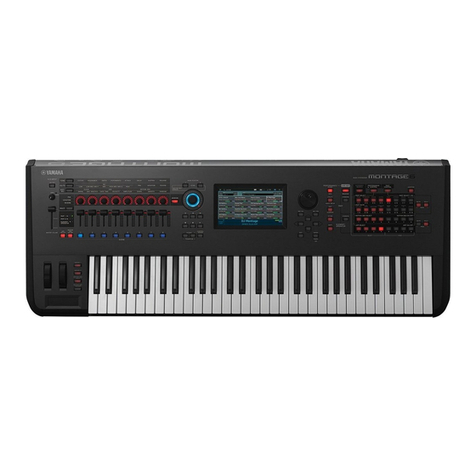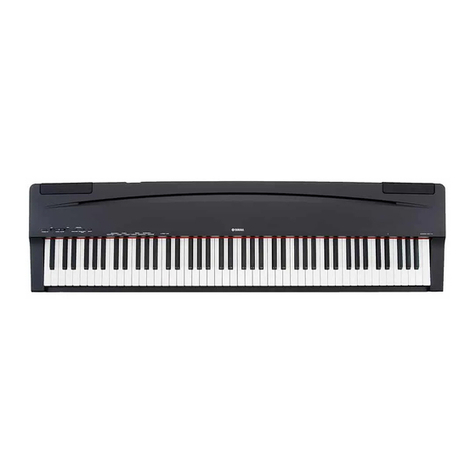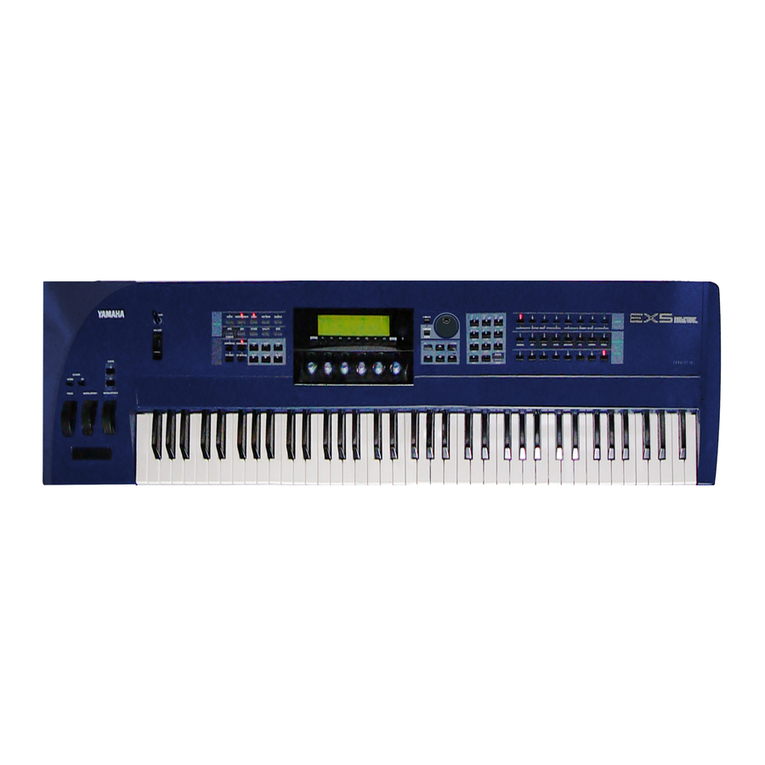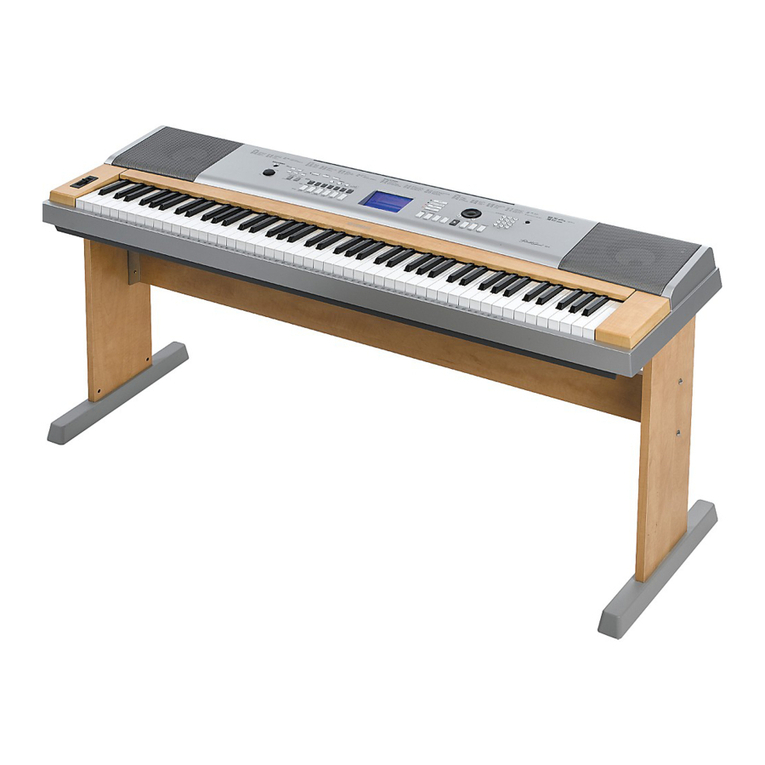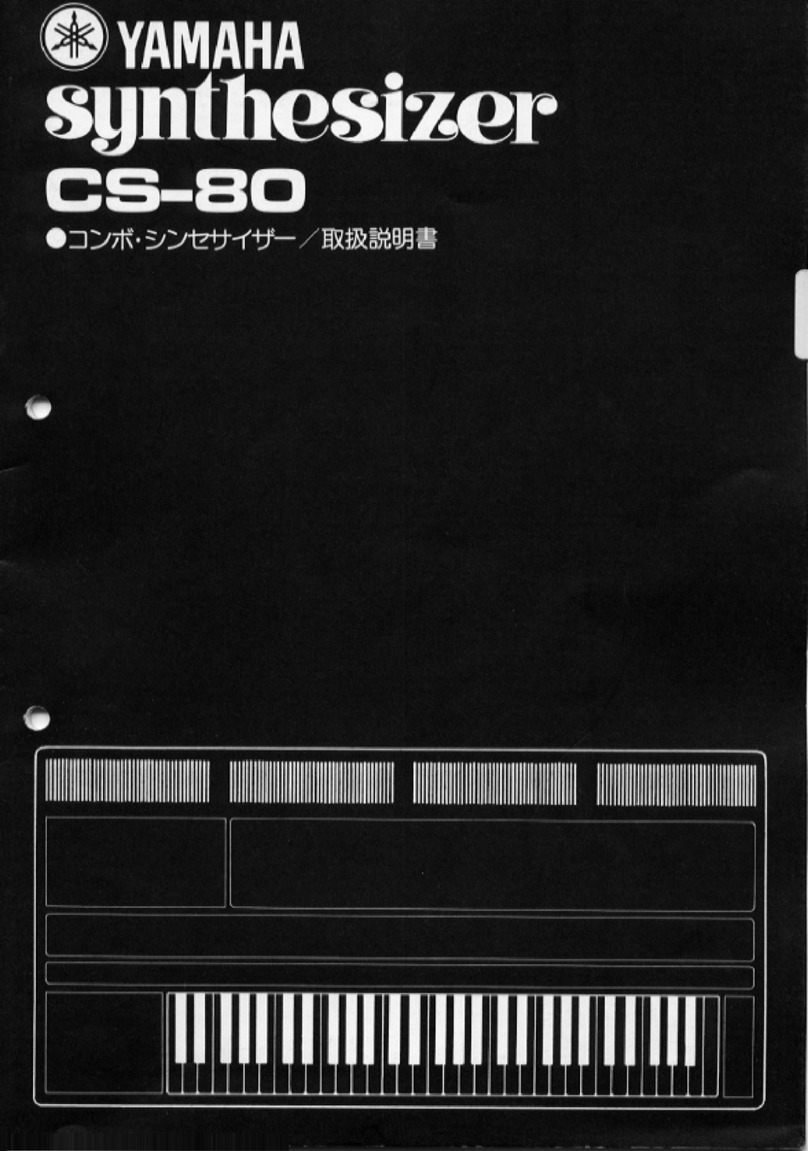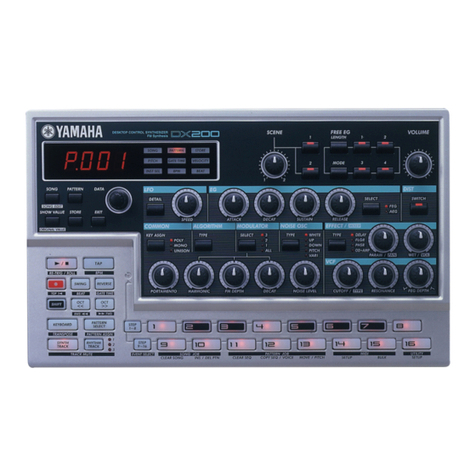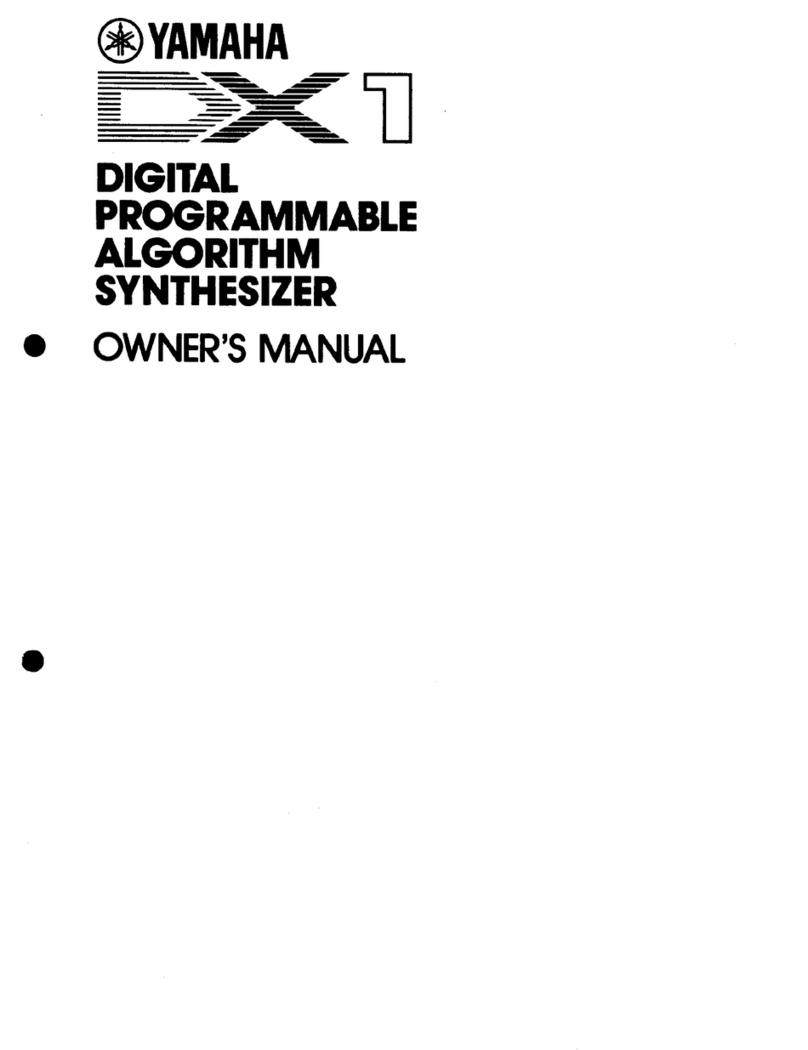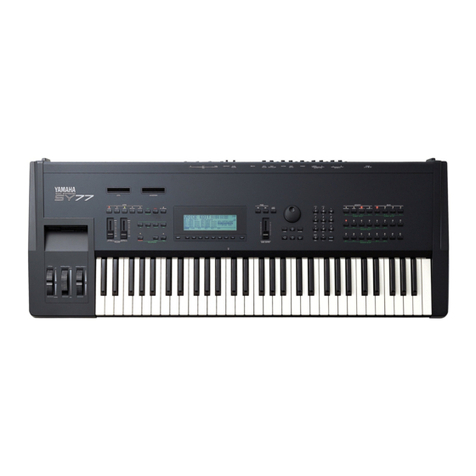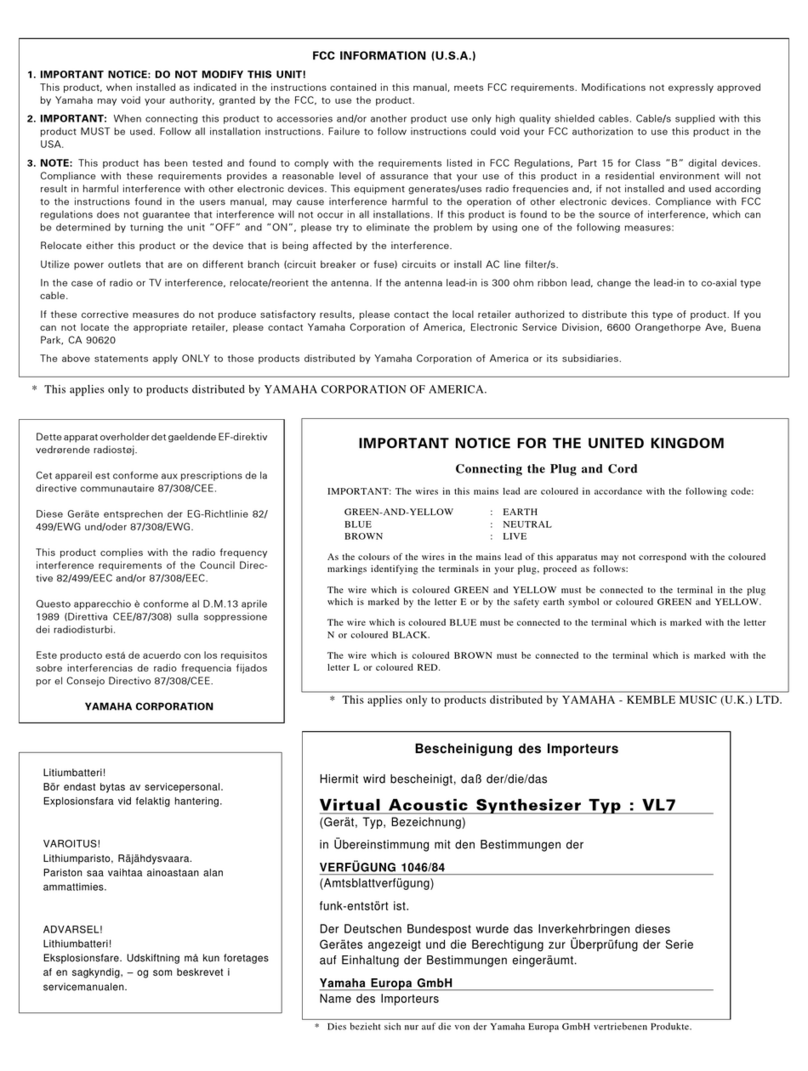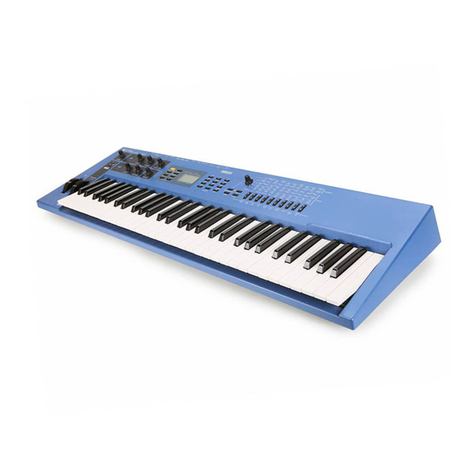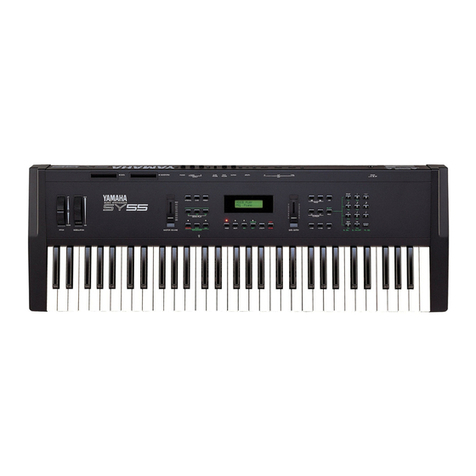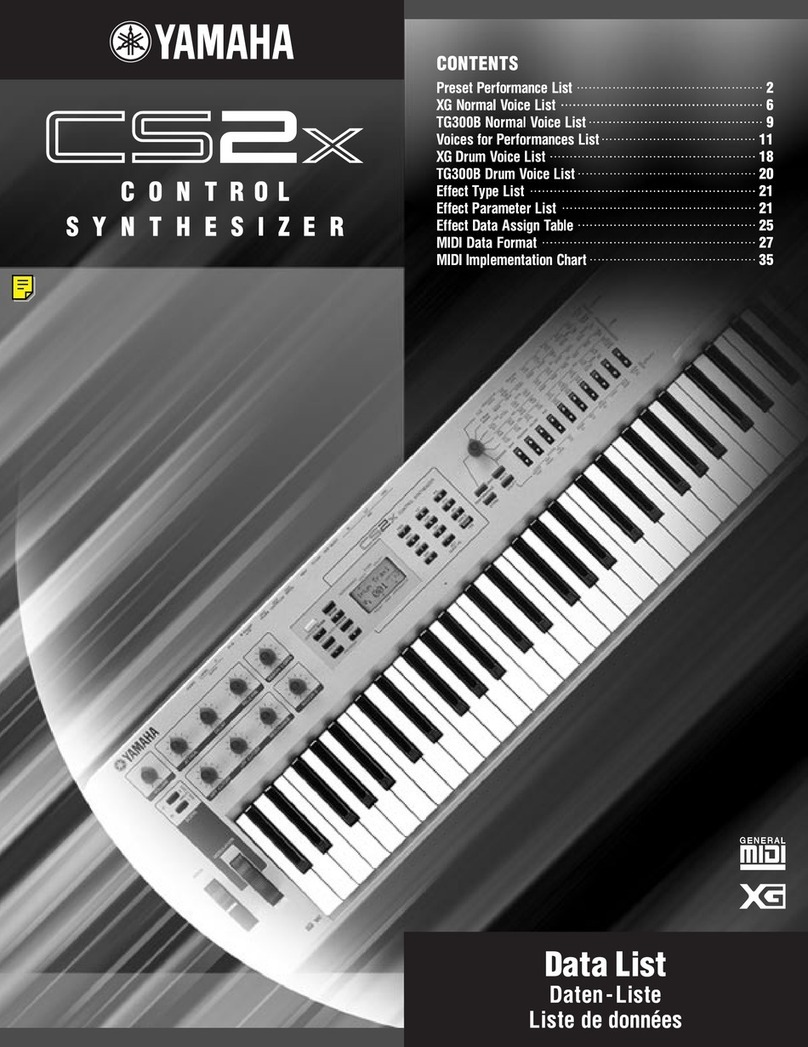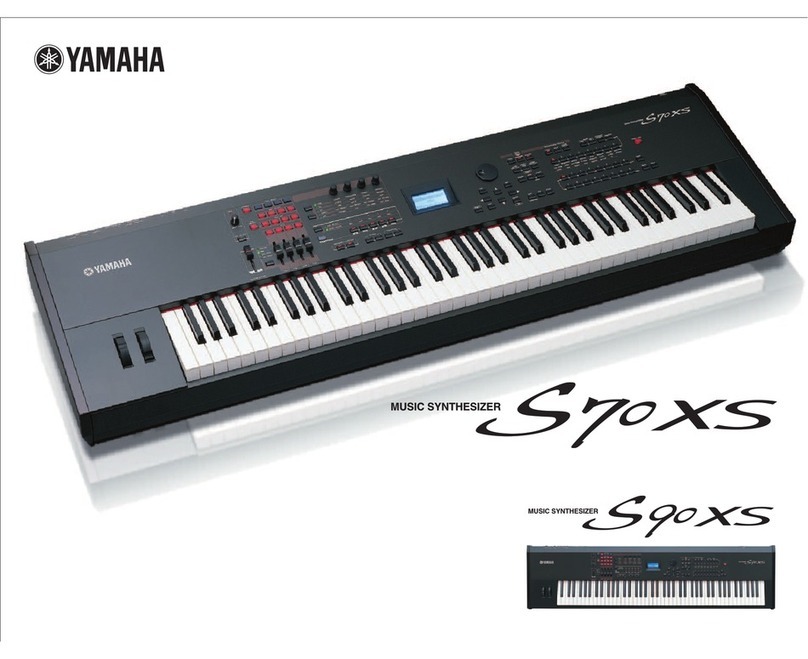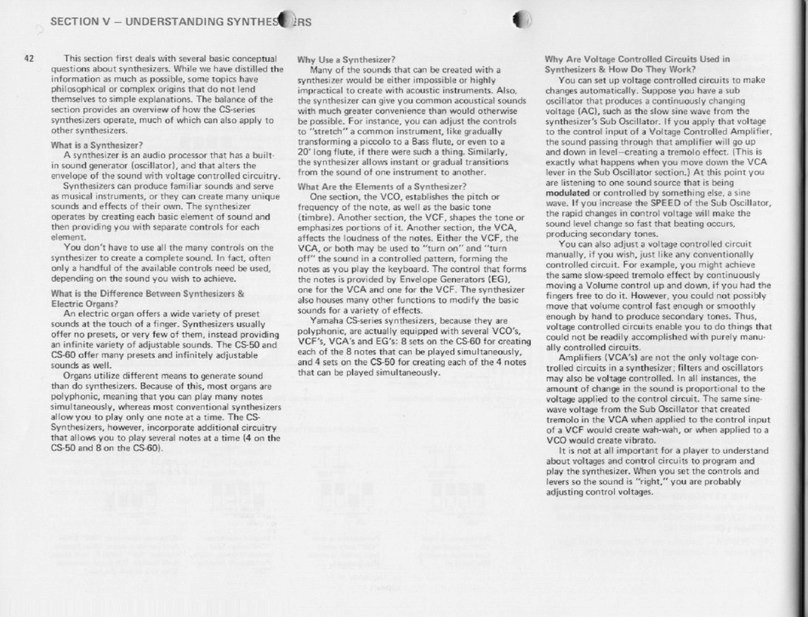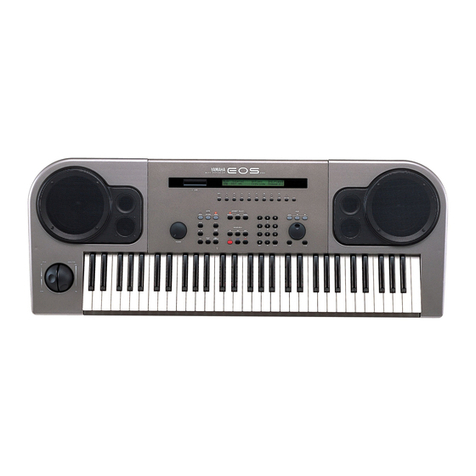QUICK SETUP INSTRUCTIONS (IMPORTANT INFORMATION <INTRODUCTION
1. Physically assemble the legs (see instructions on
page 2} or set the synthesizer atop a sturdy surface,
allowing space for air to circulate through the top
and bottom cooling vent panels.
2. Plug in the FOOT SWITCH (CS-60 only) and FOOT
PEDAL (CONTROLLER) at the rear panel; be sure
to insert the plugs in the proper jacks.
3. Using aguitar cord, connect the Rear-Panel Output
Jack to aprofessional, wide-range speaker/amplifier
unit, or to aguitar amp. (Hi-Fi music systems are
not recommended for this application.)
Alternately, connect apair of stereo headphones to
the PHONE JACK below the right side of the key-
board.
4. Open the storage panel below the synthesizer,
remove the power cord, and plug it in to asuitable
AC power outlet.
5. Set the rear-panel HIGH/LOW switch to LOW, turn
ON the synthesizer power, and set all controls at
nominal. If the volume is too low, even with the
VOLUME control all the way up and the FOOT
PEDAL flat (maximum level), then switch HIGH/
LOW to HIGH.
6. Try various preset patches by pressing down
different TONE SELECTOR buttons [3| .Adjust
BRILLIANCE (5] as you do this. See pages 26
and 31 for additional patches.
1. Always allow space below and above the synthesizer
for air to circulate through the vent panels. This is
essential for proper cooling of the circuitry. If the
vents are blocked, tuning instability and component
failure may occur.
2. Always plug the FOOT SWITCH (CS-60 only) and
the FOOT PEDAL (CONTROLLER) into the proper
jacks. THE SYNTHESIZER WILL NOT WORK
AND MAY REQUIRE REPAIR.
3. Avoid exposing the synthesizer to direct sunlight or
very high humidity environments.
4. Clean the keys and plastic parts with Yamaha Key
Cleanei creme polish, or with amoistened soft cloth.
Never use abrasives, cleansers, waxes or solvents,
which may dull the keys or chemically attack the
finish.
5. Leave internal adjustments to qualified Yamaha
service personnel. If you open up the unit and reset
any trimmers, the unit may require acomplete re-
voicing by Yamaha.
6. The EXT IN jack is designed for audio, line-level
signals. Never connect it to an AC power line, or to
aspeaker-level output. Also, do not connect the
synthesizer output to the EXT IN jack, as this may
cause feedback and possible damage to your
equipment.
7. While the synthesizer is constructed with an integral
case of sturdy plywood and metal-reinforced
corners, we recommend the use of an additional
travel case for cartage, preferably built to ATA-300
specifications. (See page 50.)
The CS-50 and CS-60 are easy to play. While they
are high-technology musical instruments, you don't
have to know about electronics to understand how to
use them. We do recommend, however, that you read
this manual thoroughly, and periodically refer back to
it as you learn your instrument. If you're in ahurry,
check the Quick Setup instructions on this page.
The Yamaha CS-50 and CS-60 are unique poly*
phonic synthesizers which place The entire realm of
musical expression at your fingertips. The CS-50
enables you to play 4notes simultaneously; the CS-60,
8notes simultaneously. These synthesizers are true
musical instruments, not merely "special effects" tools.
The sounds are infinitely variable, and, because the key-
board is touch sensitive, you have increased dynamic
control over your music.
The CS-50 and 60 will give you an incredible variety
of electronic sounds, but they go further than that.
Having aCS-50 or CS-60 is like having a symphony
orchestra to choose from. Largely due to touch sensi-
tivity (keyboard dynamics), Yamaha has overcome a
traditional challenge for synthesizers, namely, the
difficulty in creating the sound of an acoustic instru-
ment. For example, if you've ever tried to create a
"violin" on the keyboard of most synthesizers, you
probably found the result too "electronic." While you
may have achieved agood basic violin sound, when you
played it, there was something missing. ..but what?
Ask agreat violinist to play the note "G" 4 con-
secutive times (not an open string). Request that he
make them absolutely identical in pitch, timbre,
volume and every other possible variable. You'll
discover that he cannot do it. ..fortunately. Much of
the charm of amusical performance is that it is not
"textbook perfect," and this is why your well-pro-
grammed synthesized violin did not sound "right" to
you. However, your CS-60 (or CS-501 is another story.
Touch response makes all the difference. You can
set up a"violin" so that the way you press akey
changes the vibrato, Timbre, pitch, volume, brilliance
. . .the whole essence of the sound. With this kind of
expressive capability you too may not exactly dupli-
cate 8consecutive notes. However, the sound you do
achieve will be much more realistic and musical than
has ever before been practical with an electronic
musical instrument.
The CS-50 and CS-60 are among the first of awhole
new generation of performer-oriented electronic
musical instruments, including the simultaneous 2-voice/
8-note CS-80.
Only Yamaha, the world's leading manufacturer of
fine musical instruments and high-quality sound equip-
ment, could have buil! them.

